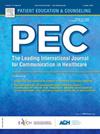是什么阻碍了生前遗嘱的制定?基于利益相关者视角的定性研究
IF 2.9
2区 医学
Q2 PUBLIC, ENVIRONMENTAL & OCCUPATIONAL HEALTH
引用次数: 0
摘要
目的从不同利益相关者的角度分析当前医疗法规下与生前遗嘱相关的挑战和复杂性,并为在亚洲和全球范围内改善生前遗嘱实施的循证战略提供信息。方法本现象学研究在中国深圳(2023年7月至2024年7月)对参与LWs制定过程的利益相关者进行了半结构化访谈。采用混合雪球目的抽样策略。采用快速定性分析和Colaizzi现象学方法对数据进行分析。结果我们的研究揭示了36个利益相关者(包括(潜在的)LWs制定者、他们的家庭成员、医疗保健提供者、法律专业人员、社会工作者和志愿者)在制定LWs过程中的关键紧张关系。分析中出现了三个主题,每个主题由两个副主题组成:(1)在哪里立生前遗嘱(医院外;在医院);(2)何时立生前遗嘱(过早;太迟了);(3)谁参与临终治疗决策(家庭成员的角色;医务人员的作用)。结论维护患者自主权的立法目标与法律法规的实施存在显著差异。公众对LWs的认识有限,这突出了开展死亡教育活动的必要性。鉴于观察到的家庭和临床利益相关者在治疗决策过程中的主导地位,开发标准化的多学科沟通模型,如Advance Care Planning (ACP),对于促进LWs的采用至关重要。实践意义利益相关方应优先开展合作,以:(1)提高公众对LWs和ACP的理解;(2)保护患者的知情同意和自主权;(3)完善LWs法规,推广符合亚洲文化背景的ACP模式。本文章由计算机程序翻译,如有差异,请以英文原文为准。
What’s holding back the making of Living Wills? A qualitative study based on stakeholder perspectives
Objective
To analyze challenges and complexities associated with Living Wills (LWs) under current medical regulations from the perspectives of diverse stakeholders, and to inform evidence-based strategies for improving LWs implementation in Asian and global contexts.
Methods
This phenomenological study conducted semi-structured interviews with stakeholders involved in the LWs making process in Shenzhen, China (July 2023–July 2024). A hybrid snowball-purposive sampling strategy was adopted. The data were analyzed using Rapid Qualitative Analysis and Colaizzi’s phenomenological method.
Results
Our study revealed key tensions in the process of making LWs among 36 stakeholders, including (potential) LWs makers, their family members, healthcare providers, legal professionals, social workers, and volunteers. Three themes emerged from the analysis, each comprising two subthemes: (1) Where to make Living Wills (Outside hospitals; Inside hospitals); (2) When to make Living Wills (Too early; Too late); (3) Who is involved in making end-of-life treatment decisions (Role of family members; Role of medical staff).
Conclusions
Significant discrepancies exist between legislative aims to uphold patients’ autonomy and the implementation of LWs. Limited public awareness of LWs underscores the need for death educational initiatives. Given the observed dominance of familial and clinical stakeholders in the treatment decision-making process, developing standardized multidisciplinary communication models such as Advance Care Planning (ACP) is essential to facilitate LWs adoption.
Practice implications
Stakeholders should prioritize collaborative efforts to: (1) enhance public understanding of LWs and ACP; (2) protect patients’ informed consent and autonomy; (3) improve LWs regulations and promote ACP models that align with Asian cultural contexts.
求助全文
通过发布文献求助,成功后即可免费获取论文全文。
去求助
来源期刊

Patient Education and Counseling
医学-公共卫生、环境卫生与职业卫生
CiteScore
5.60
自引率
11.40%
发文量
384
审稿时长
46 days
期刊介绍:
Patient Education and Counseling is an interdisciplinary, international journal for patient education and health promotion researchers, managers and clinicians. The journal seeks to explore and elucidate the educational, counseling and communication models in health care. Its aim is to provide a forum for fundamental as well as applied research, and to promote the study of organizational issues involved with the delivery of patient education, counseling, health promotion services and training models in improving communication between providers and patients.
 求助内容:
求助内容: 应助结果提醒方式:
应助结果提醒方式:


